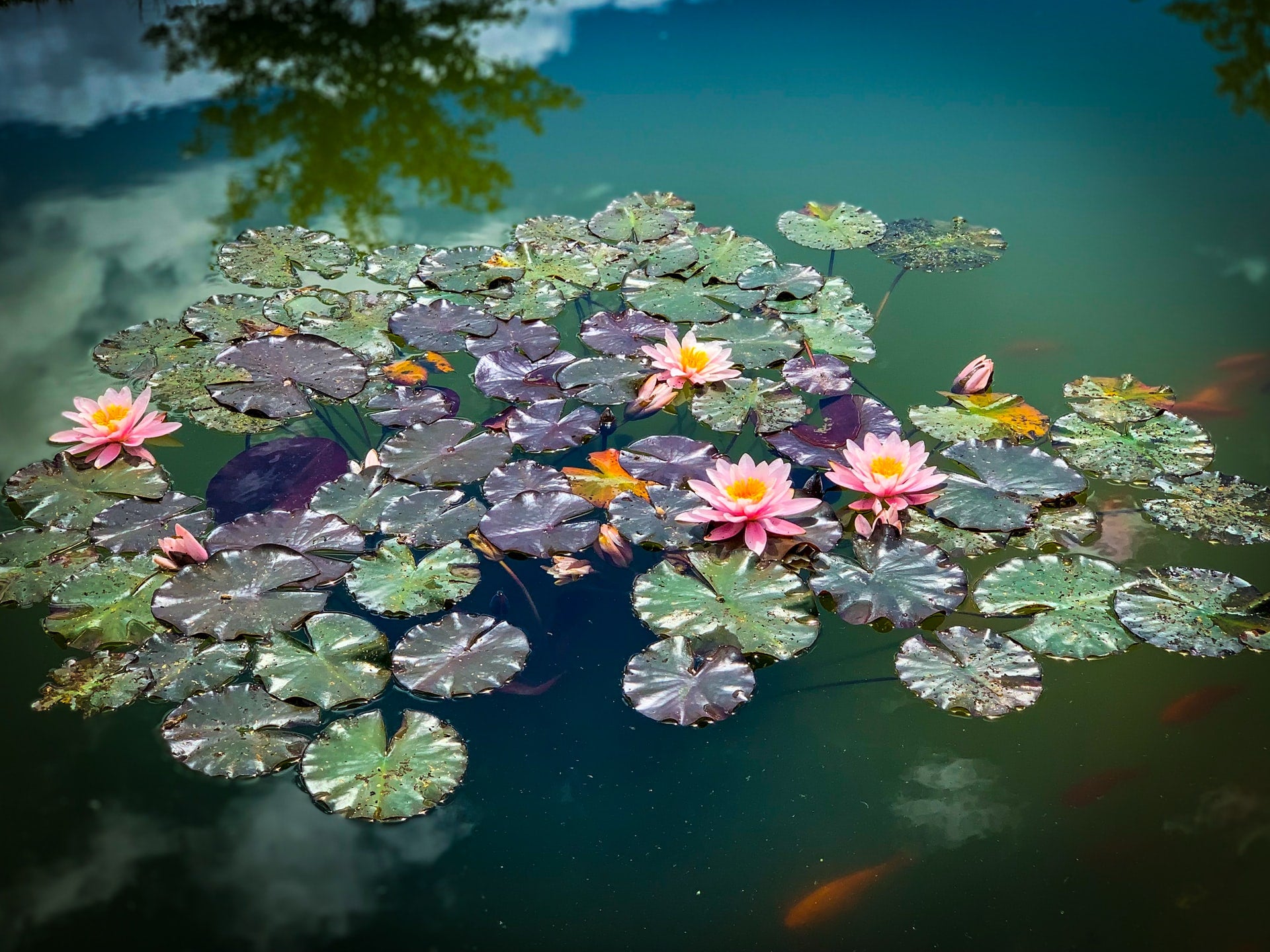If you’re a new pond owner or are thinking about building one, research is key. Even though ponds are mainly natural occurrences, there’s a lot that goes into them.
Ponds are a fine balance of water, oxygen, nutrients and fish stock. Get that balance right and your pond will largely look after itself.
Get it wrong and you have some work to do!
One common challenge that new pond owners face is known as ‘new pond syndrome’.
As this challenge is so common, we’re going to spend the next few hundred words outlining what it is, how it happens and what you can do about it.
Like most challenges pond owners face, it’s easy to overcome with a little knowledge and patience.
What is new pond syndrome?
New pond syndrome is something many new pond owners will face.
It’s the situation where your pond water is new, your plants have yet to be established, your filter and clarifier won’t have the natural bacteria to help and everything has yet to settle into harmony.
A pond is a balance of oxygen levels, amount of nutrients in the water, filtering ability of your plants and pond filter and input and output of your fish stock.
This balance takes time as everything becomes established, but in the meantime, you’ll likely experience new pond syndrome.
In our experience, it takes between 70 and 90 days for a pond to reach equilibrium.
The type and quality of water you use will have a huge influence over how badly you experience new pond syndrome.
As will how quickly you stock it with fish.
What does new pond syndrome look like?
You’ll know if you have new pond syndrome if your water turns green, emits a nasty smell or your fish begin looking ill or distressed.
Don’t mistake green water for algae as they are different things in a new pond. Both will need to be tackled, but in different ways.
If in doubt, test the water using a test kit. If you see too much ammonia or nitrite, it’s new pond syndrome.
Fish that float near the surface gasping for air, randomly bump into things in the pond or seem lethargic and not hungry will need attention.
These are all signs of fish in distress, so you’ll need to take action.
How to tackle new pond syndrome
There are a number of things you can do to help prevent, minimise or tackle new pond syndrome.
They include:
Use a filter start treatment
A filter start treatment is like one of those bio drinks, but for the pond. They contain helpful bacteria to help kick start the process.
They aren’t a magical cure but a solid kick start to the equalisation process and something we definitely recommend.
Don’t fully stock your pond
We strongly recommend starting to fill your pond gradually and not all at once. Add a few hardy fish to help start the process and build up very gradually.
Give it plenty of time between adding fish species. This will allow the water, plants and filter to adapt to fish waste and nutrient levels.
Use a filter and clarifier
Pond filters and clarifiers have a vital role to play in your pond’s equilibrium. Use a good quality, dependable filter and make sure to use the right size unit for the size of pond you have.
A filter alone won’t clean the water, the clarifier does that, so make sure you buy the right tool for the job.
Test water regularly
There’s a specific process called the nitrogen cycle that a pond needs to go through to become healthy. It begins with ammonia, then nitrite and then nitrate.
Test your pond regularly to monitor the pH level. The closer to 7 it is, the closer to harmonised it is.
We would recommend not adding fish at all until the pH reaches around 8 as it will cause them distress. Once the ammonia is being broken down into nitrite, the pH will lower enough for them to remain healthy.
Take your time
Don’t be in a rush to finish your pond and fully stock it. Finish your pond, use stored rainwater to fill it rather than tap water, do your planting and be prepared to leave the pond at least for 2-3 weeks to begin achieving balance.
Add a few fish once the pH level will support them, give them time, add a few more, give it time and so on.
Owning a healthy pond
Owning a pond is all about balance. Finding the right balance of plants, fish, filtering and pH.
It’s also about patience. Giving the pond time to find its own equilibrium, giving plants time to begin breaking down the ammonia into nitrite and to be able to provide a safe environment for fish.
Build your pond by all means and don’t worry too much about new pond syndrome.
But, be prepared to let the pond sit for a while with just water and some plants and be prepared to wait a couple of weeks before adding fish.
The more time you give the pond to find equilibrium, the more likely you are to succeed.
